Why Choose a Japan and South Korea Itinerary in 2025
Planning a trip that combines two of Asia’s most vibrant destinations is no small task. However, a carefully designed Japan and South Korea itinerary offers travelers the best of both worlds, ancient traditions and ultra-modern cities, serene nature and buzzing street life. In 2025, both countries are rolling out improved tourism infrastructure, making this the perfect time to explore.
Why choose a trip to Korea and Japan instead of focusing on just one country? For one, they offer contrasting yet complementary experiences. Japan is famous for its precision, history, and technology. On the other hand, South Korea dazzles with dynamic energy, rich culture, and delicious food. Traveling between the two is seamless, thanks to short flights and visa-free options for many nationalities.
This itinerary focuses on smart travel pacing. You’ll avoid the rush, savor local flavors, and explore major highlights. Additionally, each leg of the Japan and South Korea trip itinerary includes cultural tips, transportation guidance, and must-see attractions. Whether you’re a first-time visitor or a seasoned traveler, this journey promises unforgettable memories.
If you’re searching for thoughtfully planned South Korea and Japan tours, this guide helps you avoid common pitfalls while uncovering hidden gems. Let’s begin your adventure with pre-travel planning, ensuring you’re ready for every step.
Pre-Travel Tips for a Smooth Japan and South Korea Itinerary
Before you dive into your Japan and South Korea itinerary, it’s essential to prepare smartly. A little planning will help you avoid stress and maximize your enjoyment during the trip.
1. Best Time to Travel to South Korea and Japan
- Spring (March to May): Cherry blossoms and mild weather.
- Autumn (September to November): Colorful foliage and fewer tourists.
- Avoid summer if you dislike heat and humidity. Winters are cold but great for skiing and hot springs.
2. Visas and Entry Requirements
Most Western travelers can enjoy visa-free access to both countries. However, always double-check official websites for updated policies. As of 2025, digital arrival cards may be required for entry into South Korea and Japan.
3. Currency and Payments
- Japan: Japanese Yen (¥)
- South Korea: South Korean Won (₩)
Carry some local cash for smaller vendors. That said, cards and digital payments like Suica (Japan) and T-Money (Korea) are widely accepted.
4. Connectivity
Renting a pocket Wi-Fi device or getting a local SIM card ensures seamless navigation, translations, and bookings.
5. Transportation Passes
- Japan Rail Pass for long-distance travel.
- T-Money Card for buses and subways in Korea.
Traveling between these countries is also easy. Budget airlines like Peach and T’way offer quick, affordable flights. This makes your trip to Korea and Japan efficient and budget-friendly.
Now that you’re ready to travel, let’s begin the journey with your arrival in Tokyo.
Day 1–2: Touchdown in Tokyo: Start of Your Japan and South Korea Trip Itinerary
Your Japan and South Korea itinerary begins in Tokyo, a dazzling city where tradition and technology coexist. From the moment you land at Haneda or Narita Airport, the city greets you with efficiency and energy.
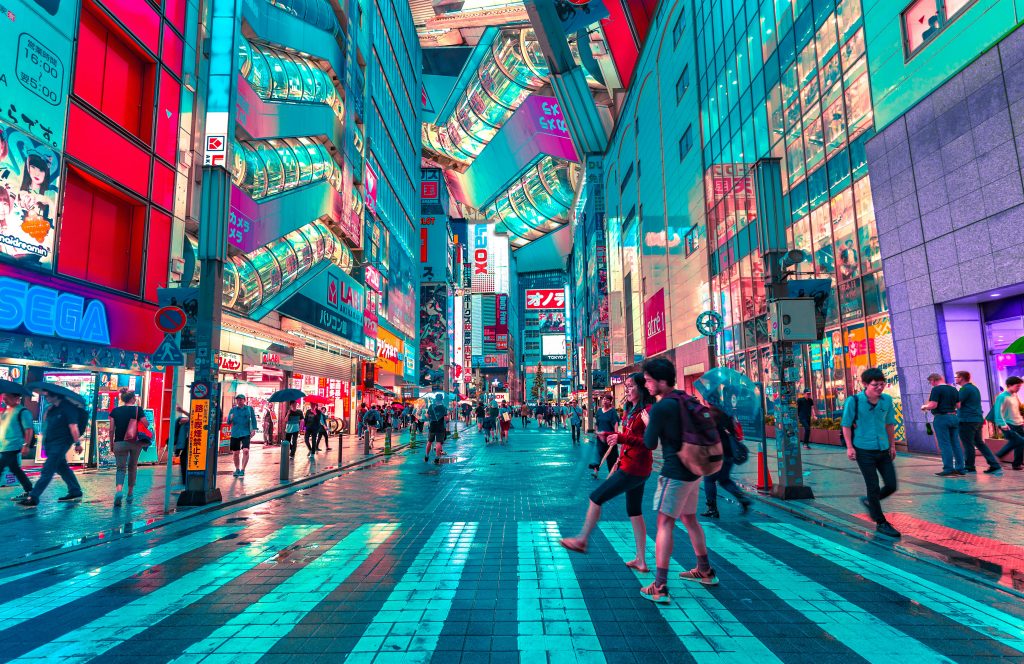
Arrival Tips:
- Take the Narita Express or Limousine Bus to central Tokyo.
- Use a Suica card for seamless public transport access.
- Stay in areas like Shinjuku, Shibuya, or Asakusa for easy sightseeing.
What to Do on Day 1:
- Shibuya Crossing: One of the busiest intersections in the world.
- Hachiko Statue: A must-visit near Shibuya Station.
- Tokyo Tower or Skytree: Panoramic views to get your bearings.
In the evening, explore local izakayas (Japanese pubs) for your first taste of authentic ramen, yakitori, or sashimi. Tokyo is safe and lively at night, making it ideal for solo or group travelers alike.
What to Do on Day 2:
- Meiji Shrine: A peaceful Shinto sanctuary in Harajuku.
- Takeshita Street: For quirky fashion and street food.
- Akihabara: Heaven for electronics and anime fans.
Tokyo is more than just a starting point, it’s a vital cultural gateway in your travel to South Korea and Japan. With world-class transport, friendly locals, and unforgettable sights, your journey begins with impact.
Up next, you’ll trade the city skyline for natural beauty as you head to Mount Fuji and Hakone.
Day 3–4: Mount Fuji and Hakone: Nature Meets Tradition in Your Japan and South Korea Itinerary
No Japan and South Korea itinerary is complete without witnessing the grandeur of Mount Fuji. On Day 3, you’ll leave Tokyo behind and head to Hakone, a tranquil region famous for hot springs, traditional inns, and scenic mountain views.
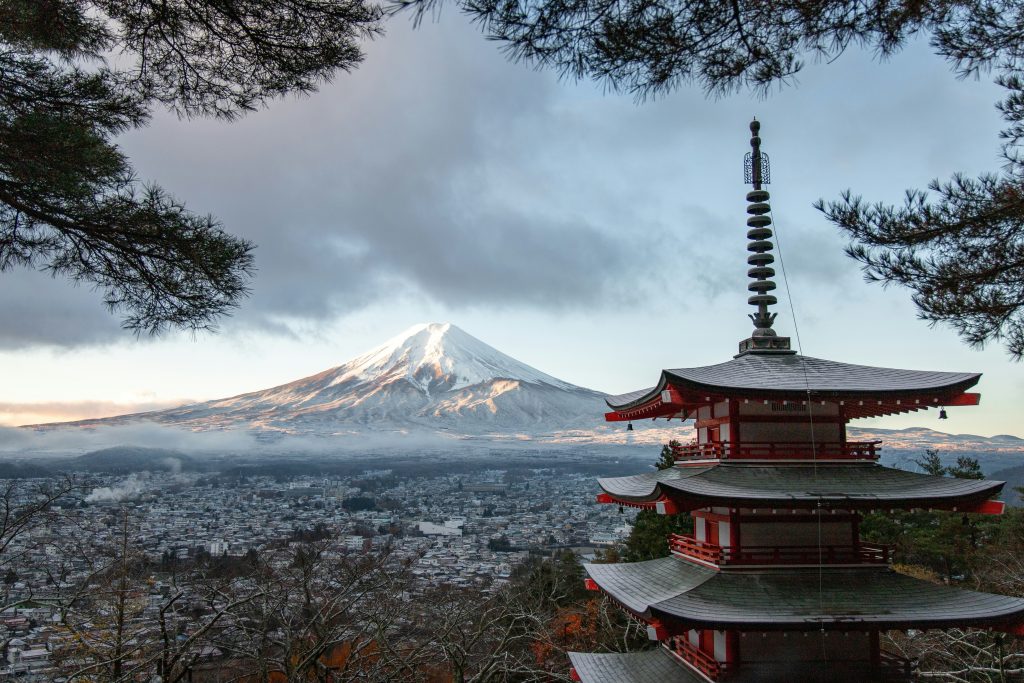
Getting There:
- Use the Odakyu Line or a JR Pass to reach Hakone-Yumoto Station.
- Consider booking a Hakone Free Pass, which covers transportation and attractions in the region.
Day 3 – Hakone Highlights:
- Hakone Open-Air Museum: A beautiful blend of art and nature.
- Lake Ashi Cruise: Offers stunning views of Mount Fuji on clear days.
- Hakone Shrine: A serene lakeside shrine with a picturesque torii gate.
In the evening, stay at a ryokan (traditional inn). Don a yukata, enjoy a multi-course kaiseki dinner, and unwind in an onsen (hot spring bath). This experience offers a deep dive into Japanese culture, perfect for any thoughtful Japan and South Korea trip itinerary.
Day 4 – Exploring Fuji Five Lakes:
Take a day trip to Kawaguchiko, one of the Fuji Five Lakes. This area offers the best vantage points for photography. Popular spots include:
- Chureito Pagoda
- Oishi Park
- Mt. Fuji Panoramic Ropeway
After your day in nature, return to Tokyo or proceed directly to Kyoto by Shinkansen (bullet train), which is both efficient and scenic.
Next up: the cultural capital, Kyoto awaits with timeless beauty and historic charm.
Day 5–6: Kyoto’s Temples, Geishas, and Historic Streets on Your Japan and South Korea Itinerary
Kyoto offers an entirely different pace and ambiance, making it an essential stop on any well-balanced Japan and South Korea itinerary. Revered as the cultural heart of Japan, Kyoto enchants travelers with ancient temples, seasonal gardens, and preserved traditions.
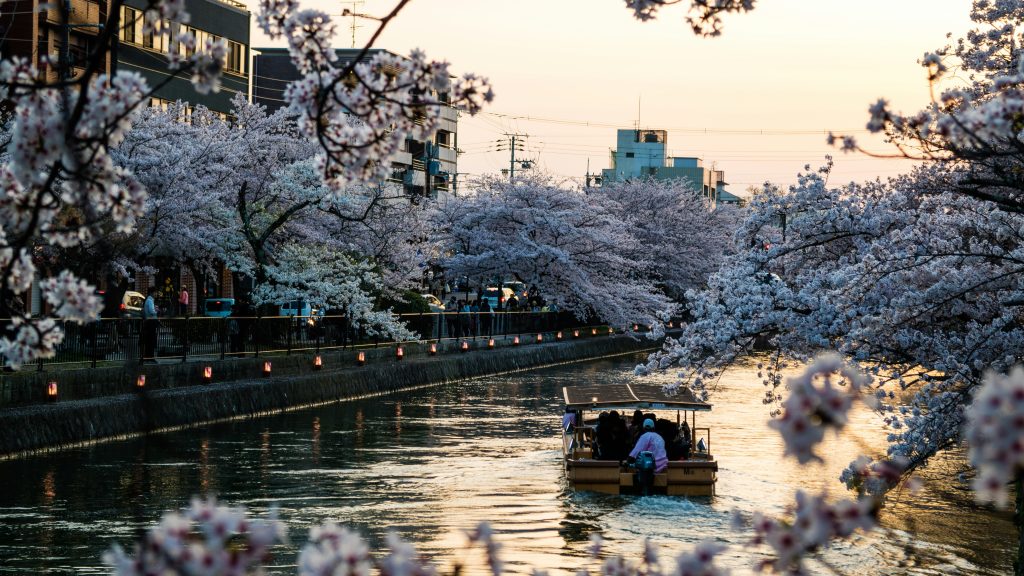
Getting There:
- Take the Shinkansen from Tokyo to Kyoto (about 2.5 hours).
- If you have a JR Pass, it will cover this journey.
Day 5 – Explore the East:
- Fushimi Inari Shrine: Walk through thousands of vermillion torii gates.
- Kiyomizu-dera Temple: Offers panoramic views and rich heritage.
- Higashiyama District: A historic area lined with teahouses and crafts.
As the sun sets, stroll through Gion, Kyoto’s famous geisha district. If you’re lucky, you might spot a maiko (apprentice geisha) heading to an evening performance. Dining in this area adds authenticity to your trip to Korea and Japan experience.
Day 6 – Discover the West:
- Arashiyama Bamboo Grove: A peaceful, photogenic retreat.
- Tenryu-ji Temple and Togetsukyo Bridge: Highlights in western Kyoto.
- Optional: Ride the Sagano Scenic Railway for breathtaking countryside views.
Kyoto’s charm lies in its preserved traditions. Even short stays here offer insight into Japanese spirituality and aesthetics. As you wrap up your Kyoto leg, prepare for the next chapter, your flight to South Korea.
Coming up: Seoul’s electric mix of history and modernity begins your South Korean journey.
Day 7–8 – Fly to Seoul: Where Your South Korea and Japan Tour Takes a Modern Turn
After immersing yourself in Kyoto’s timeless beauty, it’s time to begin the South Korean leg of your Japan and South Korea itinerary. A short flight transports you to Seoul, South Korea’s capital and a powerhouse of culture, technology, and trendsetting energy.
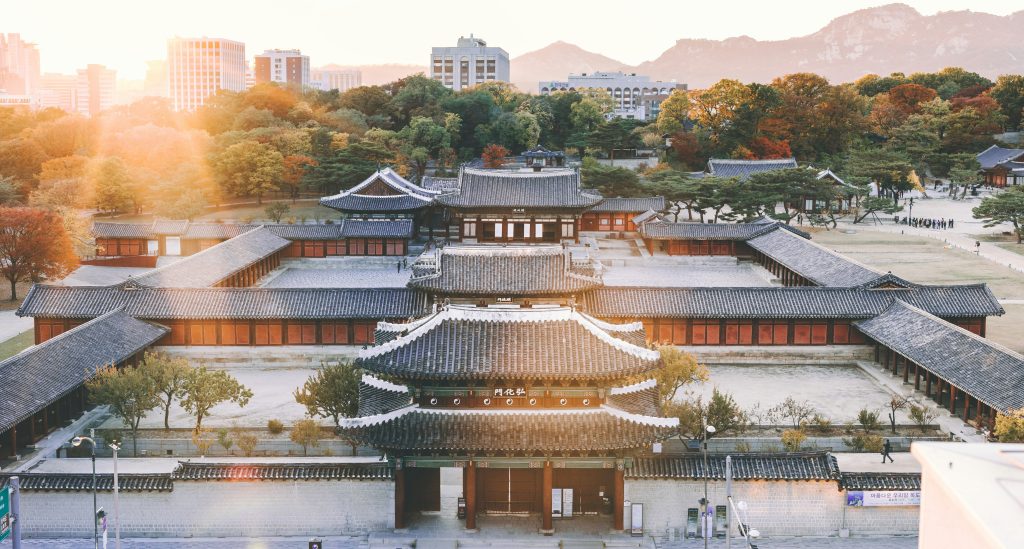
Getting There:
- Fly from Kansai International Airport (KIX) to Seoul Incheon (ICN).
- Budget carriers like T’way and Jeju Air offer frequent, low-cost flights.
Day 7 – Arrival and First Impressions:
- Take the AREX Express train from Incheon Airport to Seoul Station.
- Check in at a centrally located hotel in Myeongdong, Hongdae, or Insadong.
Your first evening in Seoul should be spent exploring Myeongdong. It’s a shopping paradise and a haven for Korean street food. Try local favorites like:
- Tteokbokki (spicy rice cakes)
- Hotteok (sweet pancakes)
- Korean fried chicken
This lively introduction sets the tone for a memorable trip to Korea and Japan.
Day 8 – Palaces and City Highlights:
- Gyeongbokgung Palace: The main royal palace, complete with guard-changing ceremonies.
- Bukchon Hanok Village: A preserved neighborhood of traditional Korean houses.
- Insadong: Great for souvenirs, tea shops, and local art.
Use a T-Money card for convenient subway travel across the city. Seoul’s balance of heritage and high-tech makes it an unmissable part of any South Korea and Japan tour.
Next, take a short trip outside Seoul for deeper historical context and unique experiences.
Day 9–10: Day Trips from Seoul: DMZ, Suwon Fortress, and Cultural Insights
No well-rounded Japan and South Korea itinerary would be complete without a closer look at Korea’s unique history and regional culture. On Days 9 and 10, take advantage of Seoul’s location to explore nearby destinations that offer deeper insights into the peninsula’s past and present.

Day 9 – Visit the Korean Demilitarized Zone (DMZ)
The DMZ tour is a rare chance to witness the division between North and South Korea. It’s a surreal and educational experience.
Tour Highlights:
- Imjingak Park: Gateway to the DMZ
- Dora Observatory: View North Korea from a safe distance
- Third Infiltration Tunnel: Discovered in 1978, it reveals real conflict history
- Dorasan Station: A symbol of hope for reunification
Book a guided DMZ tour in advance, as individual access is restricted. It’s a must-see for anyone planning a trip to Korea and Japan with an interest in geopolitics.
Day 10 – Suwon and Korean Heritage
Just under an hour from Seoul by subway, Suwon is famous for:
- Hwaseong Fortress: A UNESCO World Heritage Site
- Korean Folk Village: Displays traditional houses, performances, and crafts
Suwon blends history with accessibility, making it a perfect day trip.
These two days provide a deeper look into South Korea’s cultural layers. As your South Korea and Japan tour continues, prepare to head south to Busan, Korea’s coastal gem.
Day 11–12: Busan’s Beaches, Markets, and Seaside Temples in Your South Korea and Japan Tour
Your Japan and South Korea itinerary now leads you to Busan, South Korea’s second-largest city. It offers a refreshing change of scenery with coastal landscapes, fresh seafood, and relaxed charm.
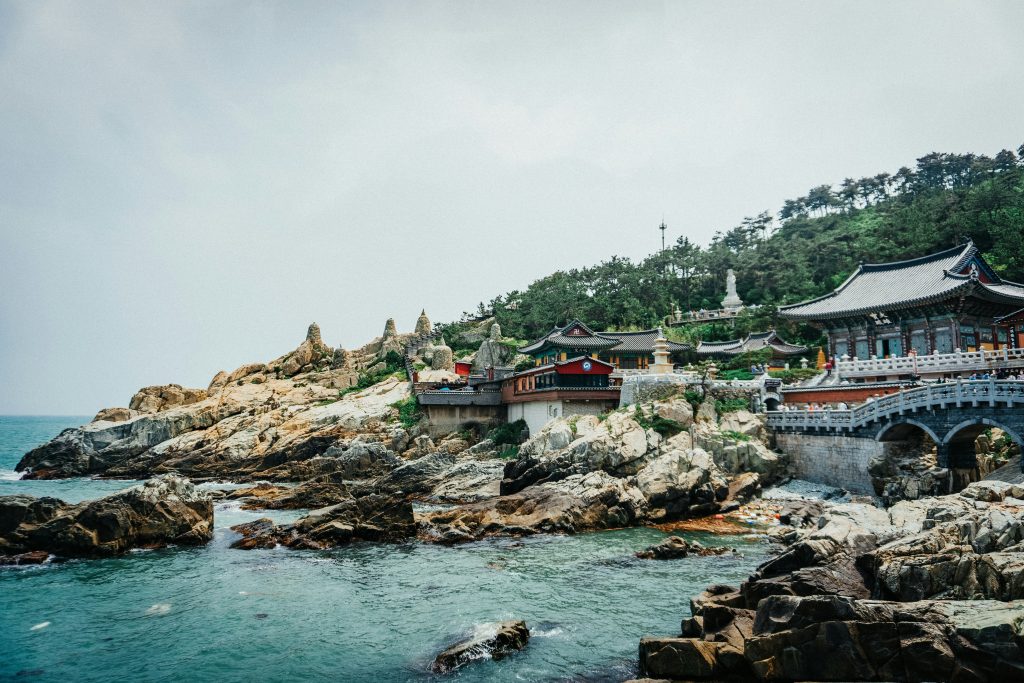
Getting There:
- Take the KTX high-speed train from Seoul Station to Busan (approx. 2.5 hours).
- Use a Korail Pass for convenience if you don’t have a T-Money card for local transit.
Day 11 – Busan’s Best Beaches and Views
Start your exploration in the Haeundae Beach area. It’s a hub for relaxation and lively cafés.
Top Spots for Day 11:
- Haeundae Beach: Ideal for morning walks or a quick swim
- Dongbaek Island: A scenic walking trail with coastal views
- The Bay 101: Great for night skyline photography
Later, explore Gwangalli Beach, known for its iconic views of Gwangan Bridge lit up at night.
Day 12 – Culture, Food, and Temples
Immerse yourself in Busan’s rich heritage.
Must-Visit Locations:
- Gamcheon Culture Village: Colorful hillside homes and murals
- Jagalchi Fish Market: The largest seafood market in Korea
- Haedong Yonggungsa Temple: A stunning seaside temple built into the cliffs
These two days enrich your travel to South Korea and Japan with relaxing yet culturally engaging experiences. Busan is vibrant, friendly, and photogenic, ideal for travelers who want more than just city lights.
Next, you’ll head back to Seoul for final tastes, gifts, and unforgettable moments.
Day 13–14 – Return to Seoul: Final Flavors and Farewells in Your Japan and South Korea Trip Itinerary
As your Japan and South Korea itinerary nears its end, returning to Seoul offers a perfect chance to revisit your favorite spots, enjoy last-minute shopping, and savor final flavors before departure.
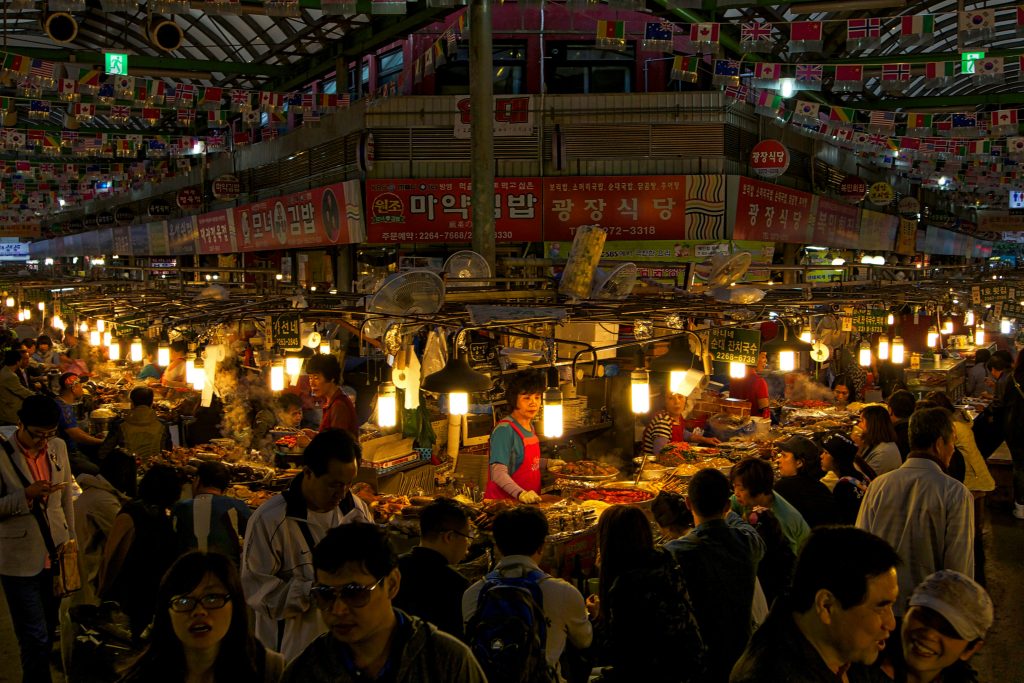
Day 13 – Markets, Malls, and Modern Seoul
Spend the day diving into Seoul’s shopping and culinary experiences.
Where to Shop and Eat:
- Namdaemun Market: Affordable souvenirs, accessories, and street snacks
- COEX Mall: Asia’s largest underground mall with bookstores and fashion
- Itaewon: International vibes with diverse cuisine options
During the evening, consider visiting N Seoul Tower on Namsan Mountain. The view offers a sweeping cityscape, perfect for reflection and photography.
Day 14 – Relaxed Farewell and Departure
Keep your final day light and stress-free.
Suggestions for a smooth departure:
- Visit a local jjimjilbang (Korean bathhouse) like Siloam or Dragon Hill Spa.
- Stop by a local café in Hongdae or Samcheong-dong for your last cup of Korean coffee.
- Allow 3 hours for travel and check-in at Incheon International Airport.
Before you leave, take a moment to review the unique memories made during this well-rounded South Korea and Japan tour. From temples and towers to markets and mountaintops, you’ve experienced the highlights of two distinct yet deeply connected cultures.
Your trip to Korea and Japan ends, but the memories will inspire you for years to come.
Final Tips – Making the Most of Your Japan and South Korea Itinerary
A thoughtfully planned Japan and South Korea itinerary can transform a good vacation into a truly unforgettable journey. Now that you’ve experienced both countries, a few final tips can help you reflect, improve, and inspire future travels.
1. Stay Flexible, but Structured
Following an itinerary helps you maximize your time. However, flexibility allows for spontaneous discoveries. Leave room in your schedule for unplanned detours, conversations, and photo stops.
2. Travel Light, Pack Smart
Across Japan and South Korea, luggage delivery services and coin lockers are widely available. Use them. Pack layers, since climates may vary between cities. Don’t forget:
- Travel adapters (Type A/B for Japan, Type C/F for Korea)
- Comfortable walking shoes
- Reusable shopping bag
3. Use Translation and Travel Apps
Language barriers exist, but modern apps make communication easier. Recommended apps:
| Purpose | App Name |
|---|---|
| Navigation | Google Maps, Naver Map |
| Translation | Papago, Google Translate |
| Transportation | Hyperdia (Japan), KakaoMetro (Korea) |
| Currency Conversion | XE Currency |
4. Budget Wisely
Both countries offer a range of travel styles. A daily average of $100–150 USD covers food, attractions, and mid-range lodging. Use prepaid cards like Suica and T-Money for transit and small purchases.
By applying these tips, your travel to South Korea and Japan will feel smoother and more fulfilling. Always plan with your interests in mind, be it food, history, nature, or culture.
Conclusion – Your Journey Across Japan and South Korea Awaits
Your Japan and South Korea itinerary has taken you through timeless temples, neon-lit cities, peaceful nature, and rich culture. By combining both countries in one trip, you’ve experienced Asia from two fascinating perspectives, distinct yet beautifully connected.
This itinerary was designed for both first-time travelers and return visitors seeking variety and cultural depth. The transitions between destinations were efficient, the attractions were well-balanced, and the local experiences were authentic.
Still, your journey doesn’t have to end here. If you’re already thinking about a return to Korea, check out our guide on 10 Epic South Korea Itinerary Ideas to Inspire Your Trip. It offers even more ways to explore the peninsula, whether you’re interested in nature, history, nightlife, or hidden gems.
As you head home, reflect on the people you met, the food you tasted, and the traditions you experienced. Keep your notes, photos, and insights. They’ll guide your next journey and help others plan theirs. A trip to Korea and Japan isn’t just a vacation,it’s a story you’ll tell again and again.
We’d Love to Hear From You!
Have you experienced a trip to Korea and Japan or are you planning one soon? Which destination are you most excited about Tokyo, Seoul, Kyoto, or Busan?
- Drop a comment below to share your thoughts, questions, or travel tips with fellow readers.
- If you found this Japan and South Korea itinerary helpful, please consider sharing it with your travel group or on social media, it might inspire someone else’s next big adventure.
- And don’t forget to bookmark or subscribe for more practical guides and personal travel insights from around the world.
Let’s build a community of curious, informed, and inspired travelers, together.

